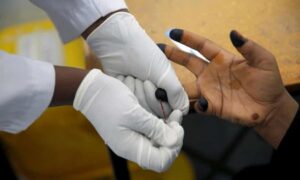
The majority of new HIV infections last year occurred in countries outside sub-Saharan Africa for the first time.
African countries have made swift progress in tackling the virus, with the number of infections in sub-Saharan Africa 56% lower than in 2010, a new report from UNAids said. Globally, infections have fallen by 39% over the same period.
“For the first time in the history of the HIV pandemic, more new infections are occurring outside sub-Saharan Africa than in sub-Saharan Africa. This reflects both the prevention achievements in much of sub-Saharan Africa and the lack of comparable progress in the rest of the world,” said the report, which found case numbers were rising in eastern Europe and central Asia, Latin America, the Middle East and north Africa.
UNAids said the world is “at a crossroads” in efforts to tackle the virus, with action this year key to success.
A backlash against human rights in many countries is making it harder for marginalised groups to access care, said Winnie Byanyima, executive director of UNAids.
At the same time, services face funding shortfalls after cuts in aid, and with many low-income countries “choking on debt”, that reduces domestic health spending, she said.
There is also a risk that gamechanging new drugs that need only to be taken every few months to treat or prevent HIV will only be available in richer countries.
Almost 10 years ago, global leaders agreed to end Aids as a public health threat by 2030 in the UN sustainable development goals.
“The world is not on track to succeed,” said Byanyima. “The world can end Aids by 2030 but that will depend on the actions of leaders, both government and corporate leaders, the actions they take today.”
In 2023, 39.9 million people across the world were living with HIV, according to a new report from UNAids launched on Monday at the 25th international Aids conference in Munich, Germany.
There were 1.3 million new HIV infections and 630,000 Aids-related deaths, including 76,000 children.
